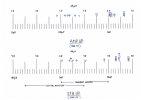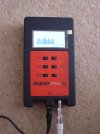OP
Newcoppiceman
Active Member
Thanks to Rodders53 for his (presumably, but you never know) helpful contributions.
We're quite low down to the west of Woking at GU21 8US, close to the Basingstoke Canal. Our aerial is on the side of the house because when I moved here in 1995 the installer couldn't get a satisfactory signal from CP with the aerial on the chimney. (I didn't want to use the Guildford relay as this is less well supported maintenance-wise than CP.) Certainly since analogue switch-off reception issues at any time of the year due to the usual suspects like variable propagation, CCI and trees (there are some nearby) have been few-and-far-between; we rarely saw a glitch on any mux. So our post-9 Oct predicament has come as a real surprise.
Actually, throughout the mixed-mode years of the 2000s reception of both analogue and digital was also ok - the 25dB Group A Antiference loft preamp was installed in Mar 2003, replacing an 18dB Fringe loft preamp installed in 1998 with the XG14A. Pic shows measurements made with the new preamp - note 7dB difference in level between analogue BBC1 and BBC2. The distribution losses were less then as the preamp PSU had only one output, not two. (Everyone keeping up?)
Re the Yagi 18A, worth considering - but its provenance isn't clear. I think I'll stick with a UK manufacturer (with a reputation to protect and a full-spec data sheet).
Mike Read's Heritage Chart Show is transmitted overnight (time varies) Sunday/Monday on Talking Pictures TV, Freeview 82. I've been watching my recordings of this for about 18 months with ne'er a glitch - but the 9, 16, 23 and 30 Oct recordings were completely unwatchable due to break-up. I'm currently checking this Monday's recordings made on the replacement (spare) PVR and also on the original PVR.
Notwithstanding that our two TVs seem unaffected by our current Humax predicament, a new aerial (and possibly preamp) seems a wise investment. Incidentally we have always used our lounge TV as a monitor (no aerial feed) as we rely on the PVR as the source for live TV.
The new meter arrives today ...and I think I've found the fault with the garage light!
We're quite low down to the west of Woking at GU21 8US, close to the Basingstoke Canal. Our aerial is on the side of the house because when I moved here in 1995 the installer couldn't get a satisfactory signal from CP with the aerial on the chimney. (I didn't want to use the Guildford relay as this is less well supported maintenance-wise than CP.) Certainly since analogue switch-off reception issues at any time of the year due to the usual suspects like variable propagation, CCI and trees (there are some nearby) have been few-and-far-between; we rarely saw a glitch on any mux. So our post-9 Oct predicament has come as a real surprise.
Actually, throughout the mixed-mode years of the 2000s reception of both analogue and digital was also ok - the 25dB Group A Antiference loft preamp was installed in Mar 2003, replacing an 18dB Fringe loft preamp installed in 1998 with the XG14A. Pic shows measurements made with the new preamp - note 7dB difference in level between analogue BBC1 and BBC2. The distribution losses were less then as the preamp PSU had only one output, not two. (Everyone keeping up?)
Re the Yagi 18A, worth considering - but its provenance isn't clear. I think I'll stick with a UK manufacturer (with a reputation to protect and a full-spec data sheet).
Mike Read's Heritage Chart Show is transmitted overnight (time varies) Sunday/Monday on Talking Pictures TV, Freeview 82. I've been watching my recordings of this for about 18 months with ne'er a glitch - but the 9, 16, 23 and 30 Oct recordings were completely unwatchable due to break-up. I'm currently checking this Monday's recordings made on the replacement (spare) PVR and also on the original PVR.
Notwithstanding that our two TVs seem unaffected by our current Humax predicament, a new aerial (and possibly preamp) seems a wise investment. Incidentally we have always used our lounge TV as a monitor (no aerial feed) as we rely on the PVR as the source for live TV.
The new meter arrives today ...and I think I've found the fault with the garage light!



 - especially as other tuner-receivers are OK.
- especially as other tuner-receivers are OK.